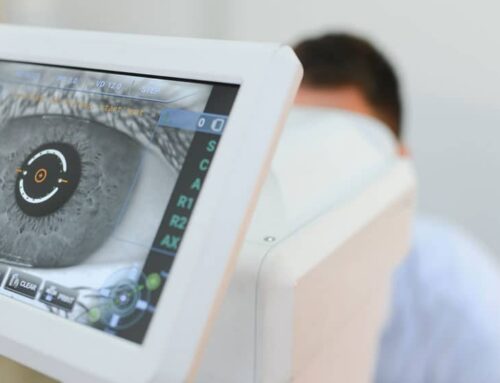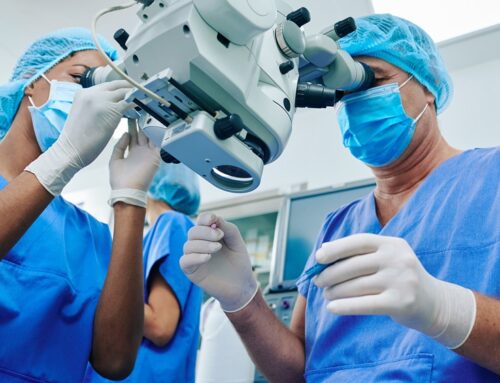Laser refractive surgery, sometimes known as LASIK eye surgery, is one of the most well- known and widely used procedures for improving patients’ eyesight. LASIK, which stands for laser-assisted in-situ keratomileusis, is a procedure that may be used instead of spectacles or contact lenses.
During LASIK surgery, a specialized cutting laser is utilized to make a precise alteration to the form of the transparent tissue (cornea) located at the front of your eye to enhance your vision.
The cornea is responsible for accurately refracting light onto the retina, located in the rear of the eye, in eyes with normal vision. However, whether someone has nearsightedness (also known as myopia), farsightedness (also known as hyperopia), or astigmatism, the light is bent improperly, which results in blurry vision.
Why Do You Need Lasik Eye Surgery?
LASIK surgery is an option that may be considered for the correction of any of the following visual issues:
Nearsightedness (myopia)
If your eyeball is somewhat longer than average or your cornea curves too sharply, light rays will focus in front of your retina, impairing your vision of objects in the distance. You have a clear view of things relatively close to you but not of things that are further away.
Farsightedness (hyperopia)
If your eyeball is shorter than usual or your cornea is too flat, the light will focus behind the retina rather than on it. This can happen for several reasons. Depending on the situation, this causes blurriness in both near and sometimes far vision.
Astigmatism
Astigmatism results from an uneven curvature or flattening of the cornea, and it causes problems with the ability to concentrate on both close and far objects.
If you are contemplating LASIK surgery, it is likely that you already use some form of corrective eyewear, such as glasses or contact lenses. Your eye doctor will discuss with you whether or not LASIK surgery or another method comparable to it is a possibility that will work for you in treating your refractive error.
What Are the Risk of LASIK Eye Surgery?
It is extremely unusual for complications that result in a loss of vision. However, LASIK eye surgery is associated with several potential negative side effects, the most common of which are dry eyes and temporary visual issues such as glare.
In most cases, this issue resolves itself after a few weeks or months, and very few people view it as a persistent challenge.
Some of the risks of LASIK eye surgery include;
Dry eyes
The LASIK procedure has been shown to reduce the number of tears produced temporarily. Your eyes may feel especially dry as they heal for the first six months or so after you have had surgery. Vision impairment is one of the potential side effects of dry eyes.
If you suffer from dry eyes, your optometrist may suggest using eye drops. If you have severely dry eyes, you may consider undergoing a different treatment in which special plugs are inserted into your tear ducts. These plugs stop tears from flowing away from the eyes’ surface and into the tear ducts.
Glare and double vision
After surgery, you may have trouble seeing at night for a period ranging from a few days to a few weeks. You may have a heightened sensitivity to light, glare, halos surrounding bright lights, or double vision.
Undercorrections
If the laser eliminates a small amount of tissue from your eye, you won’t obtain the improved vision you were expecting as a result of the procedure. Undercorrections are more typical for those who are nearsighted. Within the next year, you might need to have a second LASIK operation to remove additional tissue.
Overcorrections
Additionally, there is a risk that the laser will remove an excessive amount of tissue from your eye. It’s possible that fixing overcorrections will be more challenging than fixing undercorrections.
Astigmatism
An unequal excision of tissue can sometimes result in astigmatism. You may need additional surgical procedures, glasses, or contact lenses.
Flap problems
During surgery, if the flap covering the front of your eye is folded back or removed entirely, you risk developing complications such as infection and excessive tear production. During healing, the outermost layer of corneal tissue can often develop irregularly underneath the flap.
Conclusion
Are you experiencing any problems with your eyes? You can consider going for LASIK eye surgery to correct issues such as myopia, hyperopia, and astigmatism. Search our directory and find the right expert for your needs.







